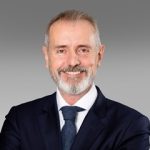We’re living in the age of the internet. There is a ‘digital divide’ between those who are connected to the internet and those who are not. The latter are cut off from the wider world – and from their own country, from social contacts, information, education, employment and economic possibilities. Building necessary telecommunications infrastructure is costly, making the digital divide a particular challenge in merging and developing economies and cementing the inequality of opportunities between urban and rural/remote areas.
In 2016 in Latin America some 100 million people (20% of the region’s population) still did not have access to mobile internet.
How to bring mobile broadband to remote populations where the deployment of conventional telecommunications infrastructure is not economically feasible?
Rethinking cellular infrastructure
On February 2019, Telefónica, Facebook and the development banks IDB Invest and CAF announced the creation of a new company: Internet para Todos Peru, a neutral wholesale operator of open access telecommunications infrastructure. Its focus is: rural areas in Latin America. Its purpose: bridging the digital divide.
Internet para Todos goes back to a project started by three people as part of Telefónica’s intrapreneurship program. As the team generated results, the project received progressive internal funding (just as a start-up would) allowing it to grow. In parallel, other parts of Telefonica became involved and a global collaborative initiative between Telefónica and Facebook was launched.
Three important hurdles were tackled via innovation and partnerships.
First, we had to map the zones with unconnected populations. Sending network engineers to remote areas to understand needs, behavioral habits and socioeconomic environment was the traditional way to collect information and it did play an important role. Yet available data was sparse, incomplete, and outdated. Our team built an innovative approach to create better information, using high-definition country-scale satellite imagery along with census data, and regulatory and Telefónica’s proprietary datasets. We also introduced Artificial Intelligence visual machine learning algorithms. The result was a model which provided a population dispersion map, counting and locating disconnected populations with good accuracy (95%) on the scale of a country.
Second, we had to create a new technology for connectivity in areas of low population density. Fixed and mobile networks have historically been designed for maximum efficiency in dense, urban environments. We solved this by adapting access network technologies (antennas and other systems that are closer to the end-user device). In fact, we opened the technology for rural networks by making software and hardware independent and allowing off-the-shelf equipment. Benefitting from the scale of other industries, such as data centers, allowed for lower cost. We then had to rethink transport networks that take the data traffic from the antennas to the wider internet, where we prioritised fibre where possible, as the best future-proof solution. Its reach was extended with low-cost microwave solutions and satellite technology (e.g. Ka HTS) in areas with especially low population density. We also experimented with balloons, zeppelins and drones. Finally, we had to innovate networks operations via artificial intelligence to monitor the state of the network in an automated way and optimise route maintenance.
Third, how to make this technically and financially sustainable and therefore reduce investment risk? This was only possible by disrupting and innovating the business model. And this required regulatory innovation, too, that enabled the creation of a rural mobile infrastructure operator by offering special regulatory conditions (e.g. spectrum, licenses, QoS obligations). As a result, Facebook, BID Invest, Banco de Desarrollo de América Latina (CAF) and Telefónica could make a joint investment in an innovative business model to deploy infrastructure in remote areas to offer mobile Internet coverage under a Network as a Service wholesale model.
At the end of 2022, more than 15,000 rural areas were connected to 4G, bringing access to high-speed mobile internet to around 3 million people in Peru. This experience resulted in important know-how for Telefónica on how to connect the unconnected.
From Peru to anywhere in the world
It would be hard to pick the ‘the one’ innovation that characterises “Internet para Todos”. It is the result of innovation on so many levels: the innovation process itself, the new technological solutions, the application of innovative regulatory measures and a never-seen-before collaboration model.
We have gained a lot of technological knowledge that can be useful anywhere. And we have learned something even more valuable: how public institutions and regulation can become a key success factor to incentivise innovation: supporting projects that are technologically innovative and have a real customer and a business case that benefits societies but are too risky for companies to tackle by themselves.
There are many challenges that are both urgent and important for our societies, that can be solved via private sector-led innovation and that are yet too large to be tackled by the private companies alone. For those we need a true team effort, with the public sector as part of the team. In
Peru we have learned that – whilst we cannot move mountains – together we can overcome them!


